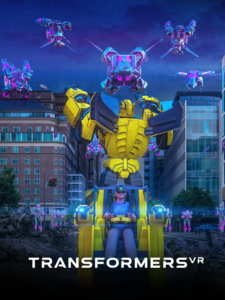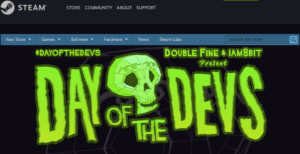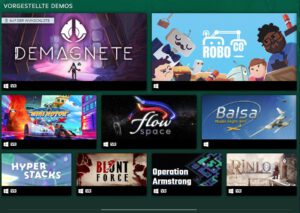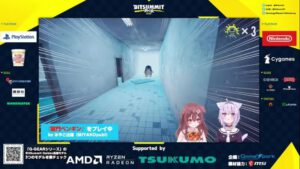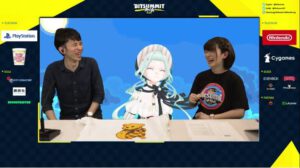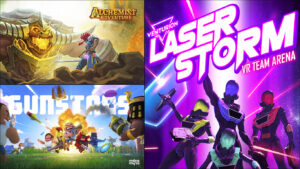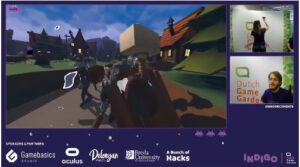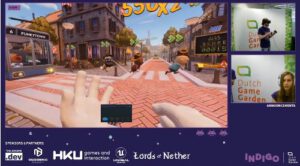The status of the annual Electronic Entertainment Expo as North America’s most important game business event has been debated since the beginnings in 1995. But these discussions came to an end this year when the pandemic situation forced the cancellation of E3 for the first time. Some relevant big industry players already shifted their promotion strategies to the internet or they were going for their own event platforms before. Despite the absence of this summer’s giant promotion party in Los Angeles, the ongoing move to digital marketing strategies and the pandemic-enforced implementation of alternative digital event platforms gave way to some interesting reorganisation trends in the global game industry in this year of ‘Non-E3’.
Notably Sony and Nintendo already pursued their own agenda long before the pandemic forced everyone to skip E3 in 2020. Nintendo set up an own presentation platform, and last year Sony already established the online streaming format State of Play for purely digital announcements of their gaming products. Geoff Keighley’s series of Summer Game Fest online events partly recompensates for E3 absence, partly replaces the event by building hypes on digital promotion streams. Most companies joined the shift to digital promotion formats, like Ubisoft’s Forward show and Microsoft’s Games Showcase. Apparently, their promotion targets have been met or even been surpassed without a real E3 event. At least, this holds for traditional gaming products and franchises suitable for video presentations. The limits of digital promotion could also be observed when Sony’s virtual presentation of the PS5 controller turned into a marketing lingo monologue, lacking the possibility to actually touch the promoted hardware product.
The most interesting changes in Non-E3 gaming promotion were realized on former sideline activities of real-world events. While at the beginning of the pandemic Steam’s Spring Festival was still organized like one of their many sidekick showcases along with local gaming events throughout the year, the Summer edition already presented a showcase on its own, completely replacing all the cancelled events.
At the same time, cozy territorial developer gatherings suddenly became global events through transmission on the internet. UKIE pitched upcoming nationally funded game releases to an international audience. DGC Dubai went from MENA zone to global recognition. BIG Brazil became much bigger than Brazil. Bitsummit Gaiten was not restricted to Japan anymore. Indigo sailed out of the Netherlands into the wide open world. Russian White Nights even lined up a whole week of broadcasting events, each day transmitted from another part of the world (Berlin, San Francisco, London, Shenzhen and St. Petersburg). And China, being left the only place where local business events continued to take place after the initial wave of pandemic lockdowns, paradoxically turned into a walled garden completely disconnected from the pandemic infused event digitization all around the globe.
These now globally accessible indie events established a general framework for satisfactory online conventions: besides notorious video lectures on Twitch or Youtube and Zoom panel discussions, they offered downloadable demo games and Discord channels to chat with the game makers. Devolver Digital published a series of demo games bundled into a playable exposition on Steam. Bitsummit Gaiten introduced a virtual idol presenter for international viewers along with local Japanese Youtubers. Indigo demonstrated innovative gameplays, like VR games, in an extra studio installation to show the interaction in detail on a split screen, while the respective games were commented by the developers in the stream.
VR games, in general, have a difficult standing at this moment of ultimate digital promotion campaigns. Innovative concepts need to be experienced, and on the internet, this can be realized only for those users owning a headset at home. But I already noted a drawback of indie VR developments last year at Gamescom and EGX. New standards established by HalfLife: Alyx and other major VR releases may have raised the bar even further towards this tendency. I could also observe a certain trend to retranslate VR typical gaming features back into flatscreen habits: Heavenly Bodies squeezes Adrift’s or Lone Echo’s zero-gravity controls back into a 2D top-downer, and quite a few recently announced first-person games make extensive use of hand interactions – but on the flat screen.
While the internationalization of game events in absence of E3 is a very positive outcome of digitization, a suitable presentation framework for experiencing innovative gameplays and hardware releases is desperately lacking. The focus on traditional video promotion could lead to even more conventionalism and retro-communication in the game industry. What looks like a handicap for VR gaming could be turned into an advantage as well: the void left by out-dated presentation forms in the ‘new normal’ needs to be filled with appropriate descendants.
